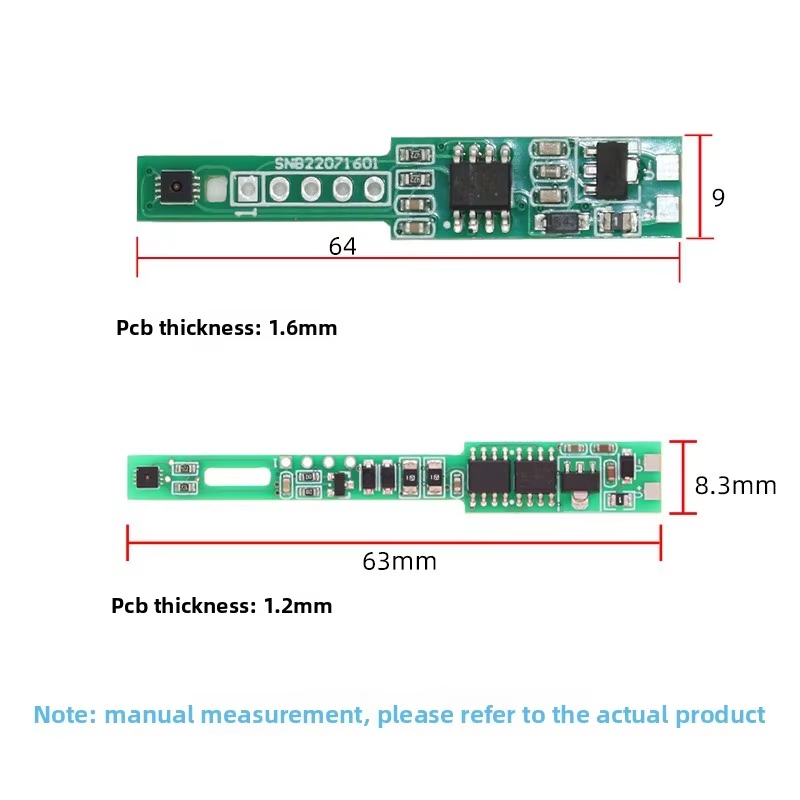June 12, 2025 — With the rapid development of the Internet of Things (IoT) and smart manufacturing, temperature and humidity modules have become core components for environmental monitoring, widely utilized in industrial control, smart agriculture, healthcare, and smart home sectors. Recently, Alibaba International Station launched a Small Angle Directional Ultrasonic Level Sensor, enriching the selection of high-precision environmental monitoring equipment. Alongside, the intelligent temperature and humidity module has also garnered significant attention in the industry for its high stability, low power consumption, and advantages in digital management.
I. Core Features of the Temperature and Humidity Module
High Precision Measurement and Stability
The module employs polymer humidity-sensitive capacitors and NTC/PTC temperature sensors, achieving humidity measurement accuracy of ±3% RH and temperature accuracy of ±0.5°C, making it suitable for harsh industrial environments. Some high-end modules, such as the Tuya WiFi temperature and humidity sensor, support automatic calibration, reducing drift errors over long-term use.
Low Power Consumption and Wireless Connectivity
Supporting wireless transmission via Wi-Fi, Bluetooth, and LoRa, the popular Tuya WiFi sensor on Alibaba International Station has a standby current of ≤35μA, with a battery life of 6-8 months. It can seamlessly integrate with smart home platforms such as Amazon Alexa and Google Assistant, enabling remote monitoring.
Anti-Interference and Industrial-Grade Protection
Some industrial-grade modules, like the HCPV-201H-11, feature an IP65 protection rating, allowing them to operate stably in high-dust and high-humidity environments. They employ digital filtering algorithms to effectively suppress electromagnetic interference (EMI) and temperature drift.
Compact and Easy to Integrate
With a miniaturized design (for example, 7.5×2.8×2.5 cm), it is suitable for embedded installation and can be integrated into smart terminals, warehousing management systems, and automated production lines.
II. Typical Applications
-
Industrial Automation and Warehouse Management
- Smart Warehousing: Real-time monitoring of warehouse temperature and humidity prevents electronic components, pharmaceuticals, and food from moisture damage or mold growth.
- HVAC Systems: In conjunction with ultrasonic level sensors (like the Small Angle Directional Sensor from Alibaba International Station), these modules optimize the operation of air conditioning and dehumidification equipment, reducing energy consumption.
-
Smart Agriculture and Cold Chain Logistics
- Greenhouse Cultivation: Automatically adjusting temperature and humidity enhances crop yields. For instance, strawberry cultivation requires maintaining an environment of 60-70% RH.
- Cold Chain Shipping: Monitoring the temperature and humidity of refrigerated trucks ensures compliance in the storage of vaccines and fresh food throughout transit.
-
Healthcare and Laboratory Monitoring
- Operating Rooms/Pharmacies: Maintaining constant temperature and humidity (22-25°C, 45-60% RH) in compliance with GMP standards.
- Wearable Health Devices: Flexible fiber sensors, such as the MXene-based strain sensors developed by Liaoning University, can integrate temperature and humidity monitoring for remote medical applications.
-
Smart Homes and Consumer Electronics
- Smart Humidifiers: Interconnecting with humidifiers/dehumidifiers to automatically adjust indoor comfort.
- Baby Rooms/Pet Environment Monitoring: Low-power sensors paired with mobile apps issue alerts to ensure safety.
III. Industry Trends and Innovation Directions
- AI and IoT Integration: Next-generation modules that incorporate machine learning can predict environmental changes and automatically adjust, such as Alibaba International Station’s AI optimization solutions that enhance equipment maintenance efficiency.
- Low-Power Wide Area Networks (LPWAN): NB-IoT/LoRa modules facilitate remote agriculture and grid monitoring.
- Flexible Electronics Technology: Wearable sensors with innovative designs, such as labyrinth-fold fibers, are driving innovations in medical monitoring.
Conclusion
Temperature and humidity modules are evolving towards greater precision, stronger anti-interference properties, and increased intelligence. Collaborating with industrial sensors like ultrasonic level sensors, they are contributing to the creation of a comprehensive environmental sensing network. In the future, as AIoT and Industry 4.0 advance, these modules will play a more critical role in smart manufacturing and smart cities.
For more sensor information,
please contact Honde Technology Co., LTD.
Email: info@hondetech.com
Company website: www.hondetechco.com
Tel: +86-15210548582
Post time: Jun-12-2025


